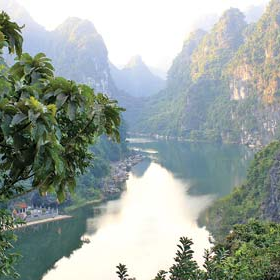The management board of Trang An in northern Ninh Binh province recently announced they will not include two cement factories and one limestone quarry in their application for recognition as a World Heritage Site to be resubmitted to UNESCO.
Trang An tourist attractions originally sent an application to UNESCO requesting recognition of Trang An as a World Heritage site, but included the limestone quarry and two cement plants that are located in the region. However, recent worries that the polluting factories could make UNESCO hesitant in granting Trang An the recognition prompted the government to remove these three sites from the application.
As such, the zone which supplies raw materials to the two cement plants and the two plants themselves will be excluded from the new tourist site zoning map to be sent to UNESCO.
Trang An management said they will explain the exclusion to UNESCO, as the file submitted to the organization earlier this year includes the two high-capacity plants and said material zone.
Several experts have also voiced their concerns that if the two cement plants don’t discontinue operation, it will be extremely difficult for Trang An to earn UNESCO’s recognition as a World Heritage site.
“No one will accept the presence of the two cement factories, considering they are a huge source of air pollution, next to a tourist site which is to be recognized as a natural wonder,” said an expert.
However, the Prime Minister concluded in July 2013 that although the Trang An complex would benefit from the recognition, the bid was made after the construction of the cement factories and thus, steps to enable the two plants to operate as normal are important.
The Ministry of Construction will work on a new plan and the Ministry of Culture, Sports and Tourism will collaborate with its construction counterpart and report it to the Prime Minister before resubmitting it to the UNESCO board.
The Trang An Complex boasts several locally-recognized sites like the Trang An ecotourism site, Tam Coc – Bich Dong, Bai Dinh pagoda—the largest of its kind in the country—and Hoa Lu, Vietnam’s former capital.

















































